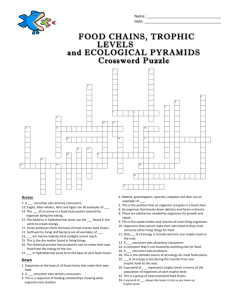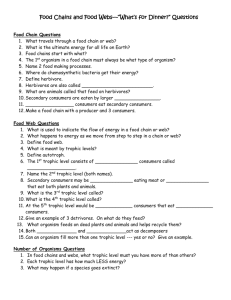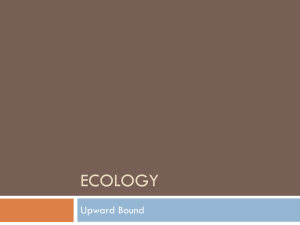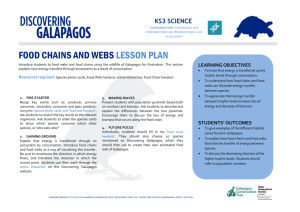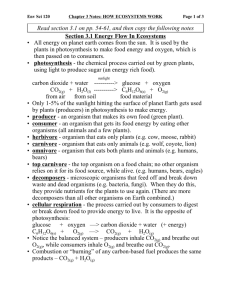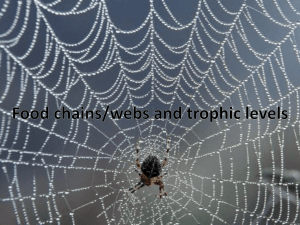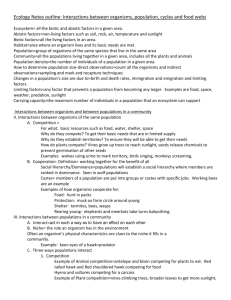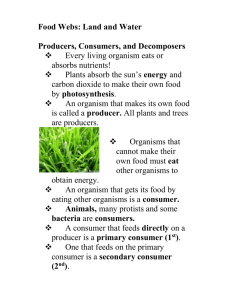Galapagos Islands Marine Food Webs
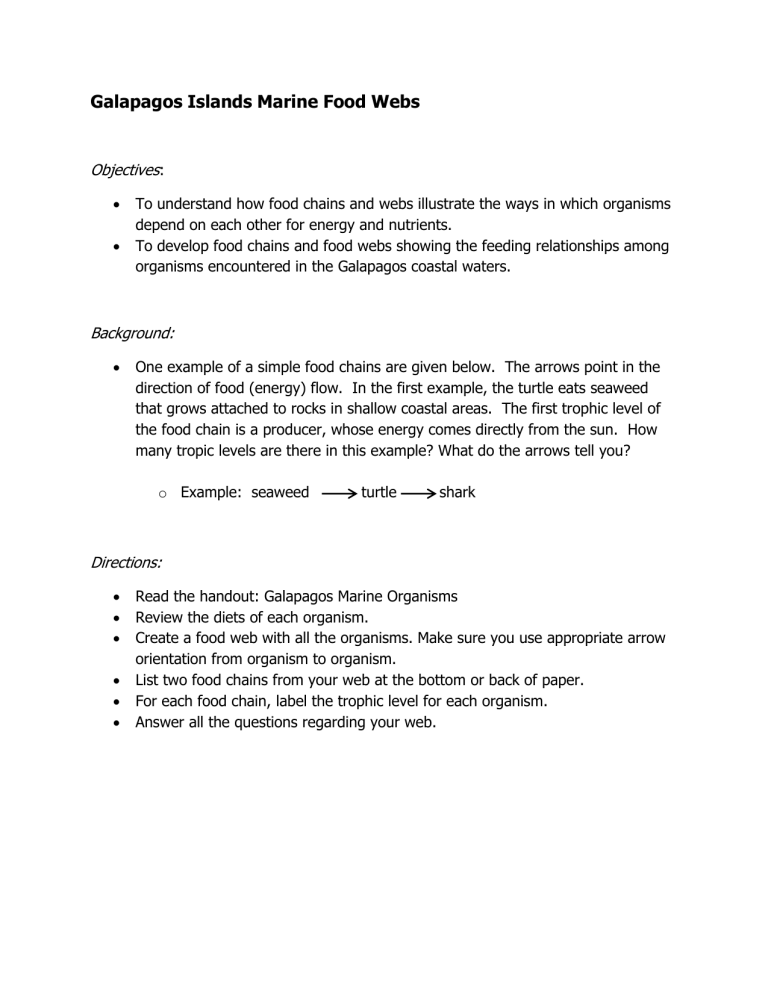
Galapagos Islands Marine Food Webs
Objectives:
To understand how food chains and webs illustrate the ways in which organisms depend on each other for energy and nutrients.
To develop food chains and food webs showing the feeding relationships among organisms encountered in the Galapagos coastal waters.
Background:
One example of a simple food chains are given below. The arrows point in the direction of food (energy) flow. In the first example, the turtle eats seaweed that grows attached to rocks in shallow coastal areas. The first trophic level of the food chain is a producer, whose energy comes directly from the sun. How many tropic levels are there in this example? What do the arrows tell you? o Example: seaweed turtle shark
Directions:
Read the handout: Galapagos Marine Organisms
Review the diets of each organism.
Create a food web with all the organisms. Make sure you use appropriate arrow orientation from organism to organism.
List two food chains from your web at the bottom or back of paper.
For each food chain, label the trophic level for each organism.
Answer all the questions regarding your web.
Galapagos Food Web Activity Questions:
1.
At which trophic levels of the food web would one expect to find the
LARGEST population?
2.
At which trophic levels of the food web would one expect to find the
SMALLEST population?
3.
At which trophic levels of the food web would one expect to find the largest adult organism?
4.
At which trophic levels of the food web would one expect to find the smallest adult organism?
5.
Which organisms might be described as “top carnivores” and why?
6.
Give one example of an environmental change that could be detrimental to this food web and why.
7.
From your drawing, which trophic level contains the most energy?
8.
From your drawing, which trophic level contains the least energy?
9.
For most ecosystems, why is the top of an energy pyramid small in numbers and mass?


